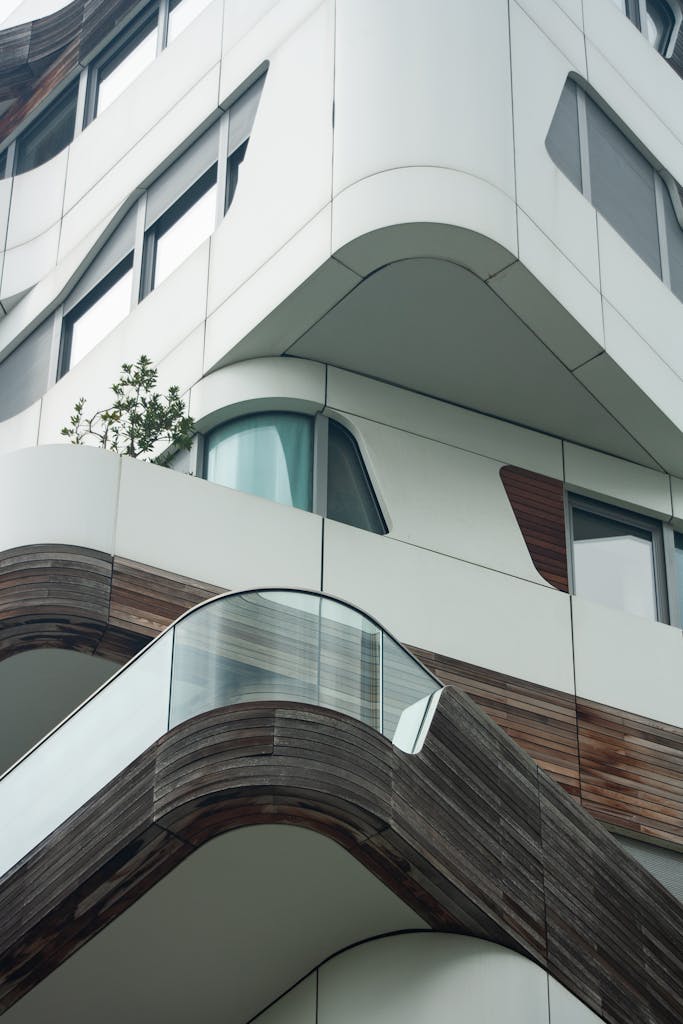Introduction: The Rise of Imperfection in Architecture
In an era that often prizes seamless visuals and flawless finishes, a counter-current in architectural design celebrates cracks, fissures, and weathered textures. This embrace of the Imperfection in Architecture signals a shift: designers now recognize cracks not as defects, but as carriers of meaning—revealing process, time, and honest materiality. Whether in concrete, plaster, ceramic, or metal, naturally occurring or purposefully induced cracks add depth, story, and tactility to spaces.
Philosophical Foundations: Wabi-Sabi and Material Truth
The Japanese philosophy of Wabi‑Sabi, with its reverence for impermanence and natural aging, champions visible cracks and irregularities. Meanwhile, brutalist and minimalist designs often leave raw materials unadorned—allowing formwork marks or hairline fractures to remain visible. These precedents show that imperfection can convey authenticity, humility, and connection to the passage of time.
Why Cracks Communicate
Cracks speak a visual and emotional language: they signal history, change, movement, and even resilience. In Imperfection in Architecture, cracks aren’t just seen—they are felt. A micro-fissure in plaster or an exposed fracture in stone suggests a narrative of life, use, and transformation. Users sense that the building is alive, responsive, and vulnerable—qualities often missing in highly polished, mass-produced environments.
Materials That Reveal Their Story
Some materials naturally manifest beauty through imperfection:
- Concrete: Intentional cracking or coarse aggregates create visual richness.
- Clay and lime plasters: Subtle fissures form over time, enhancing warmth and texture.
- Weathering steel (Corten): Develops patina and mottled surfaces that feel raw yet sophisticated.
- Reclaimed wood and brick: Already bear scars, nail holes, and uneven profiles—each crack a record of past life.
Choosing these materials means embracing a design philosophy that values the Imperfection in Architecture as a design strategy.
Techniques for Controlled Cracking
Rather than leaving cracks to chance, designers can guide their formation:
- Intentional formwork: Rough timber panels leave natural grain and texture in concrete.
- Shrinkage control: Additives produce controlled fracture lines in slabs or plaster.
- Surface treatments: Acid washes, sandblasting, or mineral stains reveal subsurface fissures.
- Thermal or moisture cycling: Exposure to cycles that coax cracks in stone or plaster surfaces.
These methods allow cracks to be part of a calculated aesthetic—not a structural afterthought.

Emotional Impact on Occupants
Cracked surfaces can establish emotional resonance through tactility and storytelling. Rather than feeling clinical or impersonal, such finishes are grounding and intimate. Users perceive these spaces as dynamic and evolving. In residential, hospitality, or cultural settings, Imperfection in Architecture fosters environments that feel lived‑in, honest, and emotionally rich.
Case Studies That Embrace the Imperfect
- Tadao Ando’s concrete works: Though often smooth, his walls sometimes exhibit gentle cracks—signs of material presence.
- Gion Atelier by Takeshi Hosaka (Kyoto): Burnt clay-plaster walls crack intentionally to reveal texture and warmth.
- ARK Integration (Morocco): Uses coarse concrete and broken formwork to create tactile facades with visible aggregates and fissures.
These projects exemplify how cracks are embedded into design language—adding depth without compromising structural integrity.
Sustainability and the Beauty of Aging
Embracing crackable materials often aligns with ecological design. Earth plasters, local stone, weathering metals, and reclaimed wood are low-carbon, low-toxicity, and buildable for longevity. Cracks age gracefully—requiring minimal repair and no repainting. By accepting imperfection, Imperfection in Architecture becomes a sustainable choice for long-term resilience and honesty.
Risks, Challenges, and Best Practices
Integrating cracks responsibly requires:
- Structural clarity: Define which cracks are harmless and which require reinforcement.
- Contractor alignment: Communicate expectations so artisans can produce consistent textures.
- Weatherproof detailing: Flashing and sealants are essential near cracks to prevent moisture issues.
- Testing and simulation: Climatic actuator models help predict performance and prevent unwanted degradation.
These strategies ensure that cracks convey character—without compromising durability.
Living Imperfection into the Future
In circular design and adaptive reuse frameworks, cracked materials become a form of digital record. The presence of fissures, stains, and patina carries data on age, material makeup, and provenance. This makes Imperfection in Architecture an ally in tracing environmental impact and preparing for future rehabilitation, reuse, or transformation.
Conclusion: The Future Is Imperfect
Embracing the Imperfection in Architecture requires a philosophy rooted in honesty, humility, and resilience. Cracked surfaces, far from being failure points, are canvases of time and traces of human involvement. When designers guide these imperfections with intention and care, they create buildings that feel alive, rooted, and emotionally resonant.
In a culture that increasingly values uniqueness and authenticity, cracked surfaces are far more than an aesthetic—it is a poetic, ecological, and humanistic blueprint for architecture that feels truly alive.

Pingback: Architectural Burnout: The Mental Toll of Overdesigned Spaces
Pingback: Architecture as Interface: When Buildings Act Like Devices
Comments are closed.